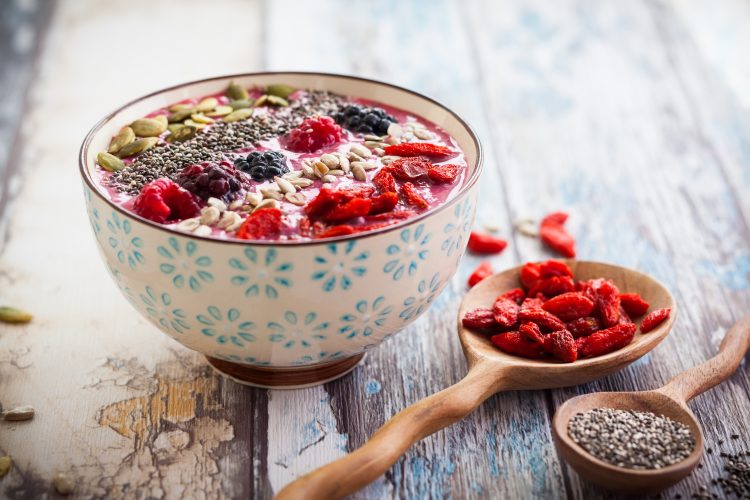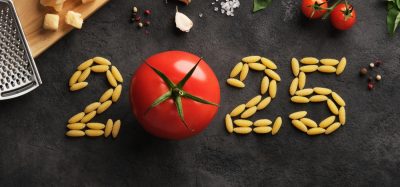How I lost 44lbs in 5 days
- Like
- Digg
- Del
- Tumblr
- VKontakte
- Buffer
- Love This
- Odnoklassniki
- Meneame
- Blogger
- Amazon
- Yahoo Mail
- Gmail
- AOL
- Newsvine
- HackerNews
- Evernote
- MySpace
- Mail.ru
- Viadeo
- Line
- Comments
- Yummly
- SMS
- Viber
- Telegram
- Subscribe
- Skype
- Facebook Messenger
- Kakao
- LiveJournal
- Yammer
- Edgar
- Fintel
- Mix
- Instapaper
- Copy Link
Posted: 14 February 2020 | Phil Patterson | No comments yet
The allure of a miracle solution can be tempting for consumers, but how do we tell the difference between the honest labels and the tall tales? Phil Patterson gives some key advice.


Disclaimer: I did not lose 44lbs in five days. If anything, I have gained at least 8lbs since Christmas. I apologise for the deceitful title, but it proves a point – you clicked on the article because you were intrigued as to how I did it.
A cursory scroll through my social media feeds will yield various life improving solutions. Weight loss, sleep aids, anxiety cures, erectile dysfunction – you name it, it is all there. It is part of the mania surrounding the wellness space at the moment. Globally, people have cottoned onto the fact that selling hope is big business. Consumers are not buying goji berries because of clinical or ingrained societal evidence, they are buying them for what they represent – hope. All that a clever marketeer needs to do is trigger a particular pain point for a consumer. By conversing directly with their insecurities and their inner psyche, it is not so difficult to position a specific product as a solution.
Some tips to help you debunk this sector:
- Miracle worker?
If it feels too good to be true, then it is almost certainly too good to be true. Trust your inner radar. The same sixth sense that alerts you to endearing Nigerian Princes can also keep you right on wellness fads.
Ask yourself: If it was this easy, then why is everyone not doing it? If the results are so superb, why is it affordably priced?
There is no ‘magic pill’, no fix-all solution, no shortcut for hard work.
Consumers look for ‘common sense logic’ and value above grandiose claims. Producers should build a foundation for sustained growth with directly attributable claims – keep it simple and realistic.
- Look for clinical evidence
Clinical tests are not a singular authority, but they exist to study material properties and their effects and are a good indicator of potential efficacy. Here is your rough guide:
Clinically Tested: Vitamin C, iron, paracetamol and viagra.
Unproven: Goji berries, acai, pre-workout mix and hangover cures.
In fairness, my paternal grandmother used to prepare gallons of a homemade cold remedy and weirdly enough, it would work – but let’s attribute that to copious amounts of honey and lemon.
When choosing supplements to enhance your overall wellbeing, be careful. Do you need it? The CBD market has seen a huge growth of late, but cannabidoids service a vital internal mechanism. According to some experts1, the endocanniboid system was discovered in the early 90s and its cultivation leads to homeostasis. At Real Cannabis Club we stay away from grandiose, misleading claims.
Hopefully the deadline that the Food Standards Agency set yesterday [March 13, 2020] for the CBD industry will help deter the fraudsters from marketing dishonest products in the future.
- Simple is Better
In any food or drink, a pretty basic rule of thumb is that simple is inevitably better. The less ingredients in a food stuff, the better it is for general wellness. Look at all those E numbers in a can of soft drink, or the amount of preservatives in processed foods. Not so good – and why would they be, they are not as nature intended us to be.
If you are being marketed a wellness solution with a list of constituent ingredients longer than an avocado, the chances are that it is being marketed as a fix-all ‘snake oil’ solution.
Let’s look at the ingredients of a popular fat burner:
- Glucomannan 3000mg
- Green Coffee Extract 400mg
- L-Phenylalanine 400mg:
- Caffeine 300mg:
- Cinnamon Extract 250mg:
- Peppermint leaf powder 50mg:
- Choline Bitartrate 203mg (providing 83mg of Choline
- BioPerine® 5mg:
- Chromium Picolinate 110mcg (275% RI):
- Selenium Methionine 55mcg (100% RI)
That is 10 ingredients condensed into a pill.
- Look at history
The average human has not evolved significantly in terms of athletic prowess over the past two centuries. Sure, advances in strength and conditioning theories and medical sciences have led to higher performance at elite level sport and longer lifespans but as a species we have not changed dramatically.
Indeed, a fascinating piece by national geographic2 discusses the evolution of our diets and the impact it has had on our species. Our ancestors foraged and lived off the fruit of the land. No pesticides or mass farming, entirely organic and natural before it was in fashion and thrived even in the absence of healthcare. Why have we diverged so far from this basic tenet?
I would hazard a guess that the ‘meat and two veg’ diet that were the staple of previous generations, would be exponentially healthier than the modern convenience diet of processed foods and refined sugars. Back in ye olde times, there was a more agrarian economy where foodstuffs were derived almost directly from the fields. No mass production, no pesticides and additives.
That is something to keep in mind when considering the latest fad. How come previous generations lived healthy, prosperous lives despite a crippling absence of raspberry ketones? The answer is often that these new ingredients or foodstuffs have been cultivated or rebranded to form part of a clever marketing ploy.
That bowl of Irish stew loaded with beef and vegetables? Still good for you. A lot of nutrients, no additives. Not made in a lab.
About the author
Phil Patterson spent five years in Venture Capital and held senior roles in business before leaving to pursue a passion. Promoting and removing the stigma around cannabis has led to the creation of Real Cannabis Club. It aims to build trust around cannabis by publishing its supply chain on blockchain and making cannabis more affordable and accessible. Real Cannabis Club launched in November 2019 and offers a sativa-based Gold range of oils and capsules, with plans to expand into a range of cannabis-based goods.
References
- https://www.healthline.com/health/endocannabinoid-system-2
- https://www.nationalgeographic.com/foodfeatures/evolution-of-diet/
Related topics
CBD hemp & cannabis, Food Fraud, Ingredients, Packaging & Labelling, Regulation & Legislation, Supermarket, The consumer









